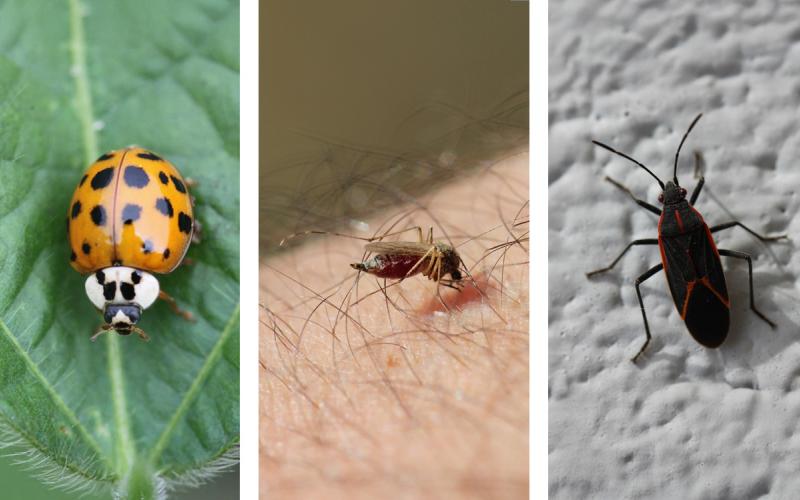Both European corn borer (Ostrinia nubilalis) and corn earworm (Helicoverpa zea) are active in corn fields. Sometimes the caterpillar activity and identity of these two species can be confused. Corn earworm caterpillars will be easier to observe due to their presence on developing ears. There have already been a few reports of corn earworm caterpillars infesting the ears of sweet corn.
What’s the Difference Between These Species?

European Corn Borer
During their lifecycle, European corn borer moths lay their eggs on the underside of corn leaves. When the caterpillars hatch, they initially feed on the leaf and then journey into the whorl. Initial feeding, called window-pane injury, will often appear as if the epidermis of the leaf has been stripped away.
As the caterpillars mature and feed in the whorl, they leave behind the characteristic shot-hole injury (Figure 1-A). However, these caterpillars don’t stop in the whorl, but will continue down the whorl and bore into the stalk itself (Figure 1-B).

In addition, European corn borer caterpillars have a dark brown head capsule with a light brown or tan body (Figure 2). Small brown circle markings can often be observed on each segment of their body.
These caterpillars can be observed on the leaves when they are recently hatched and occasionally in the whorl. However, they are almost always found within the corn stalk where they feed and reduce stalk integrity. The feeding often results in lodging and weakened shanks (i.e., when ears are present during feeding).

Corn Earworm
The corn earworm caterpillars are highly variable in color, ranging from yellow, green, pink, or black. They will almost always have alternating light and dark stripes on their body and small spines (sometimes they look like hairs) across the surface of their bodies.
With the exception of newly hatched corn earworm caterpillars, they will always have a yellow to brown head capsule (Figure 3). Table 1 compares the key identifying characteristics between these two species.

During the first generation, corn earworm caterpillars feed in the corn whorls or on nearby leaves. This feeding often results in somewhat irregular shaped holes with jagged lines (Figure 4-A).
Second generation caterpillars feed on corn silks, and eventually bore into the ear through the silk channel to the ear tip where they feed on developing kernels (Figure 4-B).
|
European Corn Borer |
Corn Earworm |
|
|---|---|---|
|
Head Capsule |
Dark brown |
Tan, yellow |
|
Body Color |
Tan, relatively smooth |
Wide range but with stripes, and spines |
|
Primary Feeding Location |
Inside stalk |
1st generation whorl; 2nd generation developing ears |
Management
Management of either of these pests can be difficult as the European corn borers move into the stalks and the corn earworms tunnel under the shucks. Foliar insecticides can be applied but should occur before the caterpillars have moved into the plant and are actively feeding on the leaves. In areas with high ECB/earworm pressure, Bt varieties can be considered for future years.


